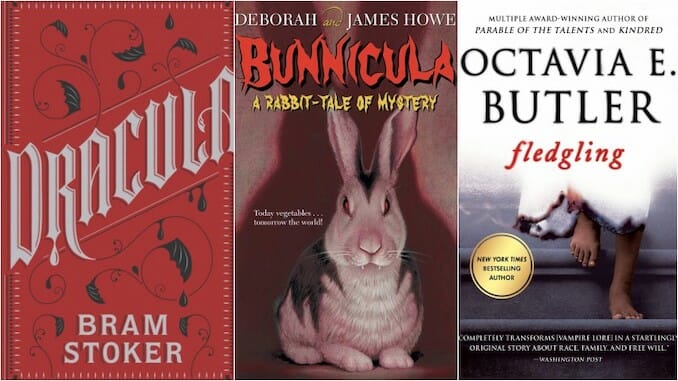
From TV shows like FX’s What We Do in the Shadows and AMC’s upcoming Interview with the Vampire to movies like next year’s Salem’s Lot and this year’s Morbius, vampire stories will never get old for the entertainment industry.
But those aren’t the only mediums that can stake a claim on the genre.
Joel Brady, a professor at the University of Pittsburgh’s University Center for Teaching and Learning and who has come to be known as the ”vampire professor” in certain necks of the woods, acknowledges that Dracula is the GOAT to the most voracious chupacabras of the topic. But he stresses that author Bram Stoker’s 1897 novel only offers a Western interpretation of the mythical being.
“There’s a whole body of literature that doesn’t really make its way into that Western canon that is a little bit closer to the original folk traditions, or certainly vampire myths,” Brady says.
He adds that “we use the term ‘vampire’ and then we find all these different cross-cultural examples. And we try to say, well, that’s the Serbian vampire. And this is the Romanian vampire. But they have their own terms, and they do different things.”
And then there’s the matter of popcorn reads like those in Charlaine Harris’ The Southern Vampire Mysteries collection and YA novels like those from the Twilight or The Vampire Diaries series.
Brady admits that “there’s probably a little bit more depth in Stoker than there might be in Twilight. But those books are good in the sense that they’re highly entertaining.” Plus, he says, while Dracula might get respect now, “it wasn’t like it was widely acknowledged at that time of its publication as some literary masterpiece.”
It can all make you a bit batty. So we’ve asked experts like Brady to assess some of their favorite blood-suckers in books.
![]()
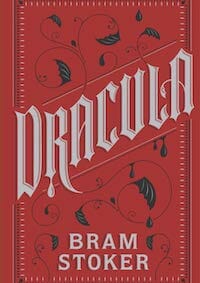 Count Dracula
Count Dracula
Book: Dracula
Author: Bram Stoker
Just to get it out of the way: yes, Count Dracula—Stoker’s notorious Translvanian stalker—is a very good example of a vampire.
“Bram Stoker’s novel, Dracula, is more complex and interesting than any of the others I’ve taught over the years,” emails Dianne F. Sadoff, a professor emerita in the English department at Rutgers, where she teaches a course on new and old depictions of vampires.
She argues that the source of the vampire’s power is “its capability to fasten on and enhance the reader’s — or viewers, since the vampire is ever popular on screen as well as in books — anxieties.”
“Since the early 19th century, the number of and level of anxieties has grown astronomically,” she says. “I wonder how many Americans have called Vladimir Putin a ‘vampire’ recently; quite a few, I would imagine.”
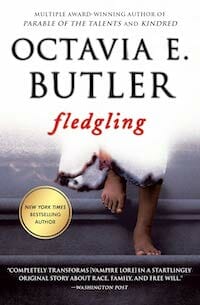 Shori
Shori
Book: Fledgling
Author: Octavia E. Butler
The late sci-fi writer’s final book “engages critically with the genre of vampire fiction and also with the subjects common to Butler’s work – namely oppression and discrimination and the struggle for power,” emails Kim Snowden, an assistant professor of teaching at the The University of British Columbia’s Social Justice Institute where she concentrates on fairy-tale motifs in vampire popular culture.
Snowden says Shori, who originally appears as a severely injured young, Black girl with amnesia, is someone we come to learn is a 53-year-old vampire from a species called the Ina who was injured in a fire that killed most of her family. The book also discusses notions of power and consent, as Ina blood is addictive to humans, as well as issues of cultural symbiosis since Shori’s species lives openly with humans.
“What I like about Shori is that she never fully recovers from her amnesia in the novel and it becomes framed somewhat as a disability; something she learns to live with rather than something that limits her or that she must overcome and she challenges those who suggest she is less-than because of it,” Snowden explains. “She must relearn her vampire history, family, traditions, and circumstances. While much of this is by instinct and senses, much of it is through the history books and stories about the Ina. As she learns these histories, she questions them and so does the reader.”
In doing this, Snowden says, “it opens up possibilities for different vampire futures where Shori represents a world free of oppression and where she also represents a different kind of vampire — worlds away from the Edward Cullens that were popular when Fledgling came out” in 2005.
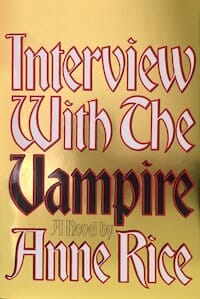 Lestat de Lioncourt
Lestat de Lioncourt
Book: The Vampire Chronicles book series
Author: Anne Rice
University of Pittsburgh’s Brady knows that a lot of people are dismissive of author Anne Rice’s erotic stories. But he says he likes that the book series eventually gives Lestat time to shine as a (potentially unreliable) narrator who claims that his vampire scion/ex-paramour Louis de Pointe du Lac was spinning lies when he gave an interview to that reporter (who then turned the whole thing into a book).
He also likes that the first book, Interview with the Vampire, pays homage to the vampires of 18th-century folklore when Louis and the child vampire Claudia head to Europe in search of older members of their kind and find what Brady describes as a “mindless revenant” more akin to what we’d consider to be zombies.
But he also says that this book series is significant in another way. Pointing to the research of Carol A. Senf, who argued that up until the 1970s vampires are simply MacGuffin— a term usually reserved for objects but are otherwise there simply to motivate the plot. The Vampire Chronicles series changed that because it gave vampires autonomy over their own stories and allowed them to become narrators themselves.
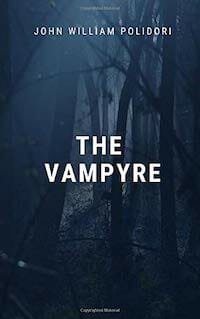 Lord Ruthven
Lord Ruthven
Book: The Vampyre
Author: John William Polidori
A short story that highly influenced Dracula, John William Polidori’s work—which came out of the same writing group that gave us Mary Shelley’s Frankenstein—may have developed because of a rivalry with poet Lord Byron.
“The story is that he had this animosity toward Lord Byron, who was also in this contest,” Brady says, adding that physician and writer Polidori created a character who is “essentially someone who’s there to ruin people, and exercise his own will to power at the expense of everyone around him.”
In making the character an aristocrat and a literal Byronic figure—i.e. the rugged, womanizing, opportunist whom Bryon often explored in his writing—Brady says Polidori takes the stories of folk tradition and “creates this new archetype.”
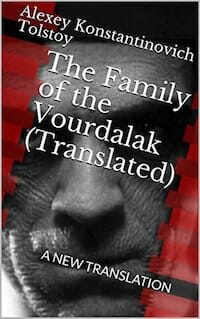 Sdenka Gorcha
Sdenka Gorcha
Book: The Family of the Vourdalak
Author: Aleksey Konstantinovich Tolstoy
The inspiration for several films—including one of the three parts of Mario Bava’s 1963 seminal film, Black Sabbath—Brady uses this novella about a traveler who happens upon a small town as an example of stories in the Serbian tradition.
He also points to the character Sdenka, a beautiful woman who seduces the protagonist so that he returns to her only to become attacked by a ton of vourdalaks.
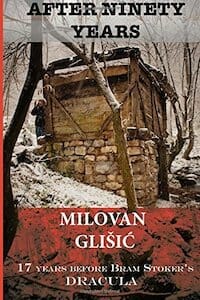 Sava Savanovic
Sava Savanovic
Book: After Ninety Years: The Story of Serbian Vampire Sava Savanovic
Author: Milovan Glisic
Published nearly two decades before Dracula, Brady says that this story utilizes the folk traditions of revenants who come back from the dead (the character Sava Savanovic haunts a watermill).
“There are revenants who, in folk traditions, come back and they may not drink blood,” Brady says. “They may just harass people or they sit on people’s chests so they can’t breathe at night. Or, instead of blood, they drink mother’s milk or the milk of domesticated animals because these traditions emerge in agrarian societies.”
 Bunnicula
Bunnicula
Book: Bunnicula
Author: James Howe
Vampire stories aren’t just for adults, of course. Ann McDevitt Miller is a former professor at St. Mary’s College of California where her courses included “The Vampire in History and Culture” and a current librarian for Southern California’s Contra Costa County Library. She suggests a tale familiar to many children: Bunnicula, the carrot-draining pet rabbit in this book series.
“Ah, that poor, worried family dog,” Miller emails, referencing Harold, the long-suffering narrator who seems to be the only one who really knows what’s going on.
Whitney Friedlander is an entertainment journalist with, what some may argue, an unhealthy love affair with her TV. A former staff writer at both Los Angeles Times and Variety, her writing has also appeared in Cosmopolitan, Vulture, The Washington Post and others. She lives in Los Angeles with her husband, son, daughter, and very photogenic cat.